The GF-3 SAR Data Processor
Abstract
:1. Introduction
2. System Architecture
2.1. Control and Infrastructure
2.2. Ingesting
2.3. SAR Processor
2.4. Geocoding
2.5. Product Formatting
3. SAR Algorithm Design
3.1. High-Precision Processing of Spotlight Mode
3.2. Azimuth Processing of Dual-Receive Stripmap Mode
3.3. Quad-Pol Processing of Quad Polarization Stripmap Mode
3.4. Scalloping Suppressing of ScanSAR Mode
4. Gaofen-3 Product Formatting
4.1. Image Pixel Data Files
4.2. Meta-Data File
4.3. Product Delivery
5. Results
5.1. Spotlight Product Focusing Quality Evaluation
5.2. Ultra-Fine Stripmap Product and the Dual-Receive Imbalance
5.3. Quad Polarization Stripmap Product and Quad-Pol Imbalance
5.4. ScanSAR Scalloping Suppressing
6. Conclusions
Acknowledgments
Author Contributions
Conflicts of Interest
Appendix A
Appendix B
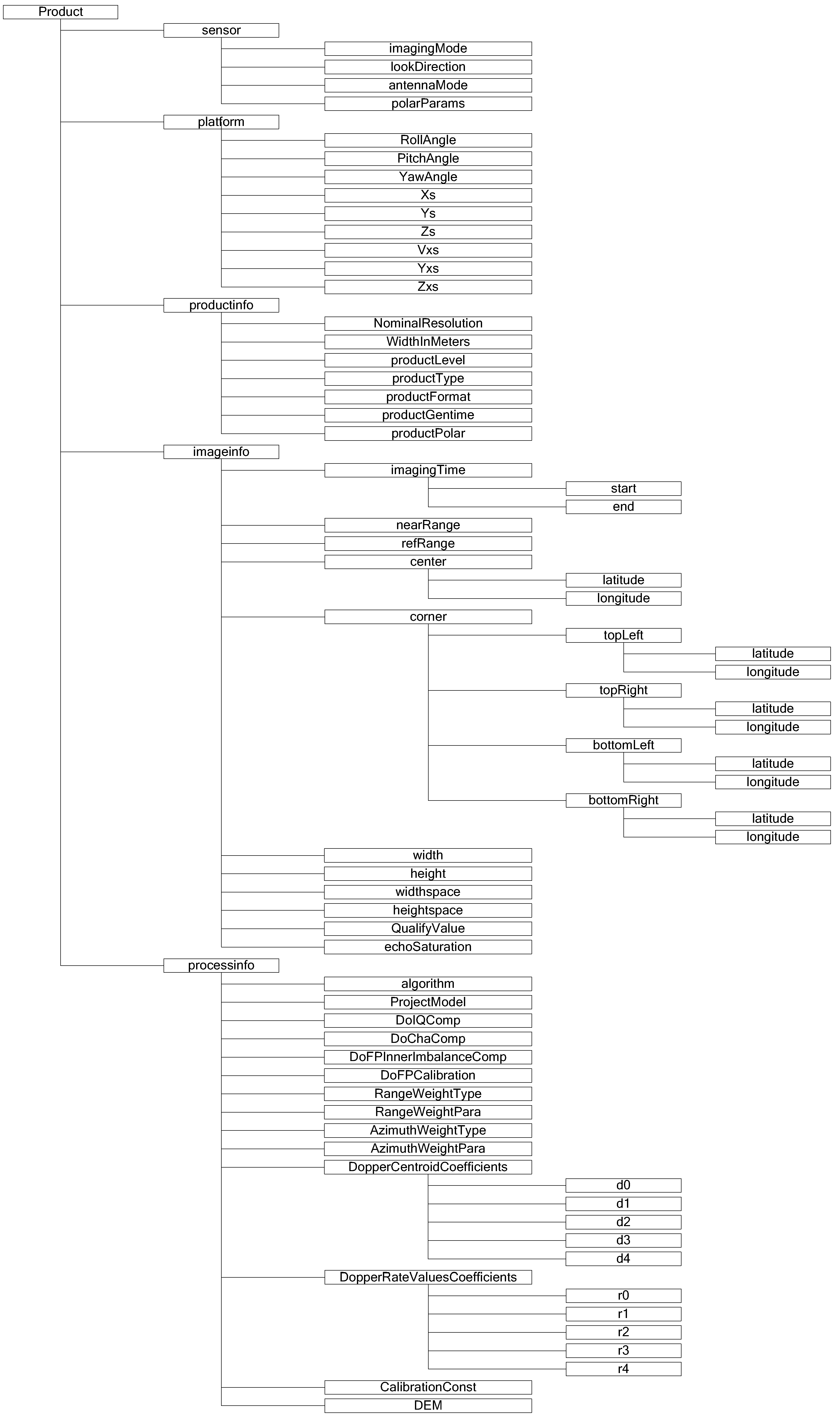
References
- Sun, J.; Yu, W.; Den, Y. The SAR Payload Designed and Performance for the GF-3 Mission. Sensors 2017, 17, 2419. [Google Scholar] [CrossRef] [PubMed]
- Gu, X.; Tong, X. Overview of China Earth Observation Satellite Programs. IEEE Geosci. Remote Sens. Mag. 2015, 3, 113–129. [Google Scholar]
- He, L.; Tong, L.; Chen, Y.; Jia, M.; Shi, J. Soil Moisture Monitoring Based on HJ-1C S-Band SAR Image and Experimental Data. In Proceedings of the IEEE International Geoscience and Remote Sensing Symposium (IGARSS), Melbourne, Australia, 21–26 July 2013; pp. 3754–3757. [Google Scholar]
- Raney, R.K.; Runge, H.; Bamler, R.; Cumming, I.G.; Wong, F.H. Precision SAR processing using chirp scaling. IEEE Trans. Geosci. Remote Sens. 1994, 32, 786–799. [Google Scholar] [CrossRef]
- Ossowska, A.; Speck, R. Hybrid strip-map/spotlight mode processing based on chirp scaling processing. In Proceedings of the IEEE International Radar Symposium, Wroclaw, Poland, 21–23 May 2008; pp. 1–4. [Google Scholar]
- Lanari, R.; Zoffoli, S.; Sansosti, E.; Fornaro, G.; Serafino, F. New approach for hybrid strip-map/spotlight SAR data focusing. IEEE Proc. Radar Sonar Navig. 2001, 148, 363–372. [Google Scholar] [CrossRef]
- Moreira, A.; Mittermayer, J.; Scheiber, R. Extended chirp scaling algorithm for air- and spaceborne SAR data processing in stripmap and scanSAR imaging modes. IEEE Trans. Geosci. Remote Sens. 1996, 34, 1123–1136. [Google Scholar] [CrossRef]
- Freeman, A.; Curlander, J.C. Radiometric Correction and Calibration of SAR Images. Photogramm. Eng. Remote Sens. 1989, 55, 1295–1301. [Google Scholar]
- Liu, J.; Han, B.; Ding, C.; Meng, D.; Li, F. The preliminary results about positioning accuracy of GF-3 SAR satellite system. In Proceedings of the 2017 IEEE International Geoscience and Remote Sensing Symposium (IGARSS), Fort Worth, TA, USA, 23–28 July 2017; pp. 6087–6089. [Google Scholar]
- Han, B.; Zhang, Y.; Hu, D.; Huang, L. Research on Mending of Space-borne Sliding Spotlight SAR Imaging Model Error. J. Electron. Inf. Technol. 2011, 33, 1694–1699. [Google Scholar] [CrossRef]
- Fornaro, G. Trajectory Deviations in Airport SAR: Analysis and Compensation. IEEE Trans. Aerosp. Electron. Syst. 1999, 35, 997–1009. [Google Scholar] [CrossRef]
- Thompson, A.A.; Ian, H. McLeod: The RADARSAT-2 SAR Processor. Can. J. Remote Sens. 2004, 30, 336–344. [Google Scholar] [CrossRef]
- Kim, J.; Younis, M.; Prats, P.; Gabele, M.; Krieger, G. First spaceborne demonstration of digital beamforming for azimuth ambiguity suppression. IEEE Trans. Geosci. Remote Sens. 2013, 51, 579–590. [Google Scholar] [CrossRef] [Green Version]
- Krieger, G.; Gebert, N.; Moreira, A. Unambiguous SAR signal reconstruction from nonuniform displaced phase center sampling. IEEE Trans. Geosci. Remote Sens. 1996, 34, 1123–1136. [Google Scholar] [CrossRef]
- Jin, T.; Qiu, X.; Hu, D.; Ding, C. Unambiguous Imaging of Static Scenes and Moving Targets with the First Chinese Dual-Channel Spaceborne SAR Sensor. Sensors 2017, 17, 1709. [Google Scholar] [CrossRef] [PubMed]
- Shimada, M. A New Method for Correcting ScanSAR Scalloping Using Forests and Inner-Scan Banding Employing Dynamic Filtering. IEEE Trans. Geosci. Remote Sens. 2009, 47, 3933–3942. [Google Scholar] [CrossRef]
- Yao, Y.; Chen, Q. The GF-3 Product Description; China Center for Resources Satellite Data and Application: Beijing, China, 2017. [Google Scholar]
- Moreira, A.; Huang, Y. Airborne SAR processing of highly squinted data using a chirp scaling approach with integrated motion compensation. IEEE Trans. Geosci. Remote Sens. 1994, 32, 1029–1040. [Google Scholar] [CrossRef]
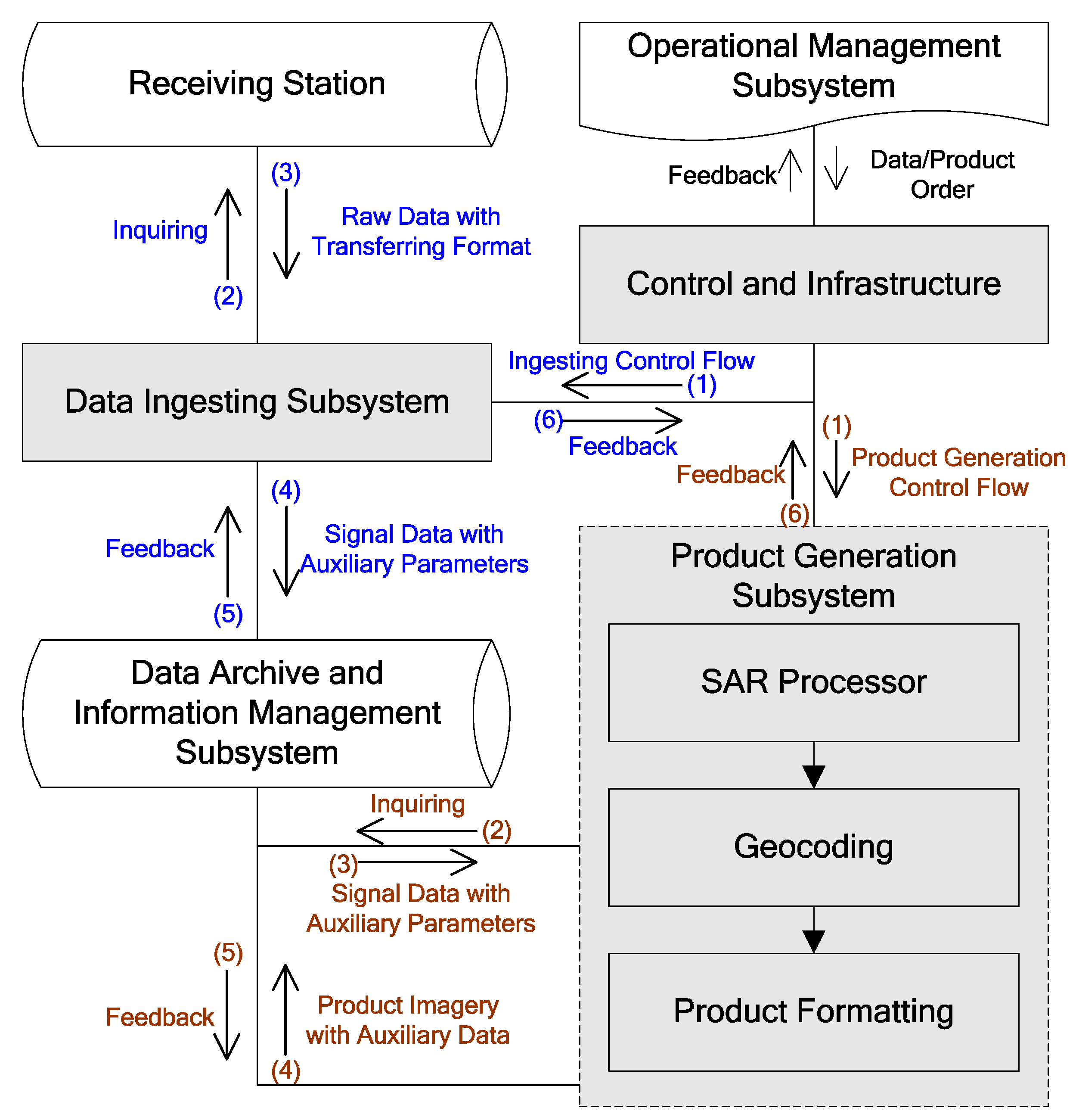
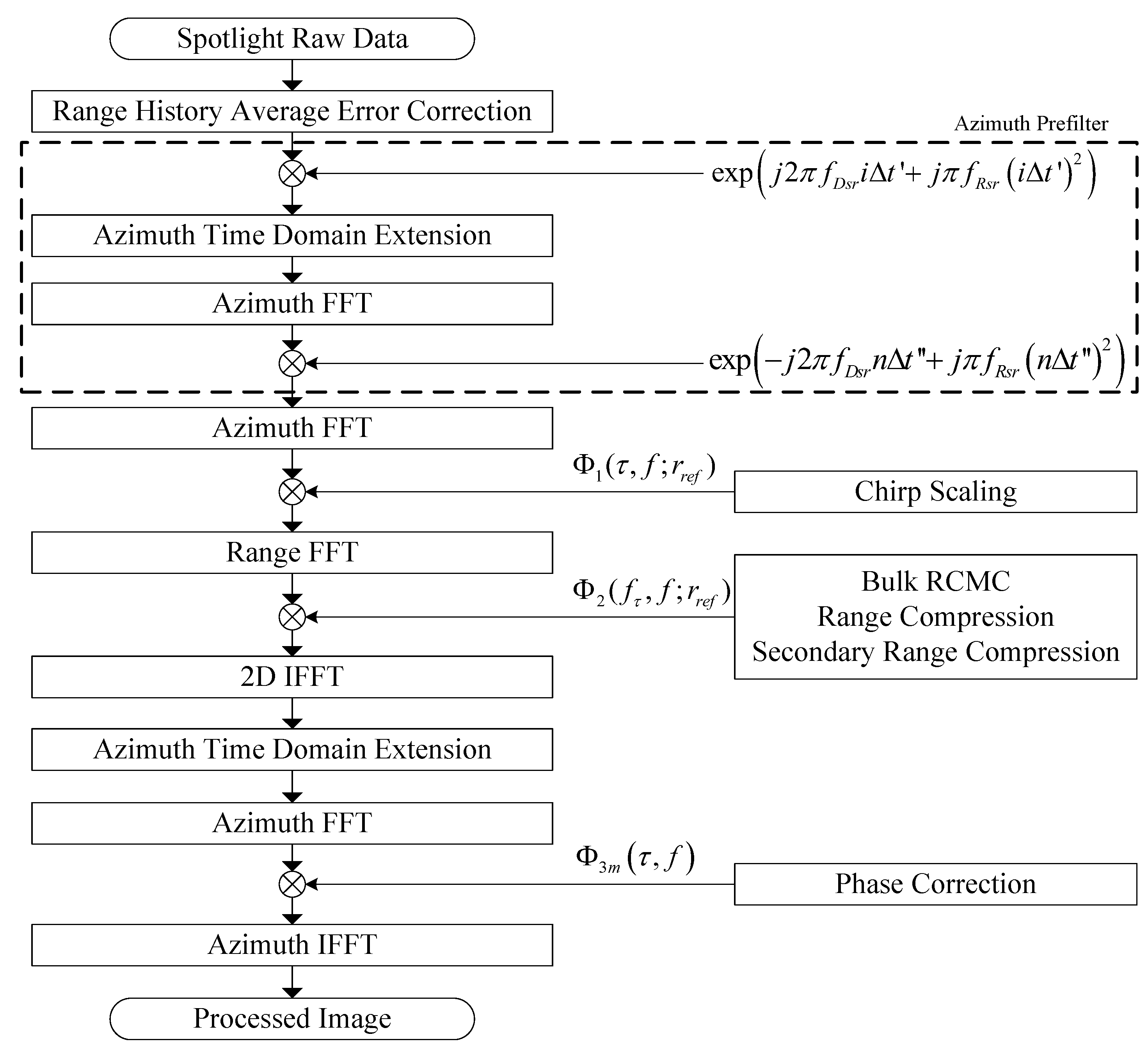
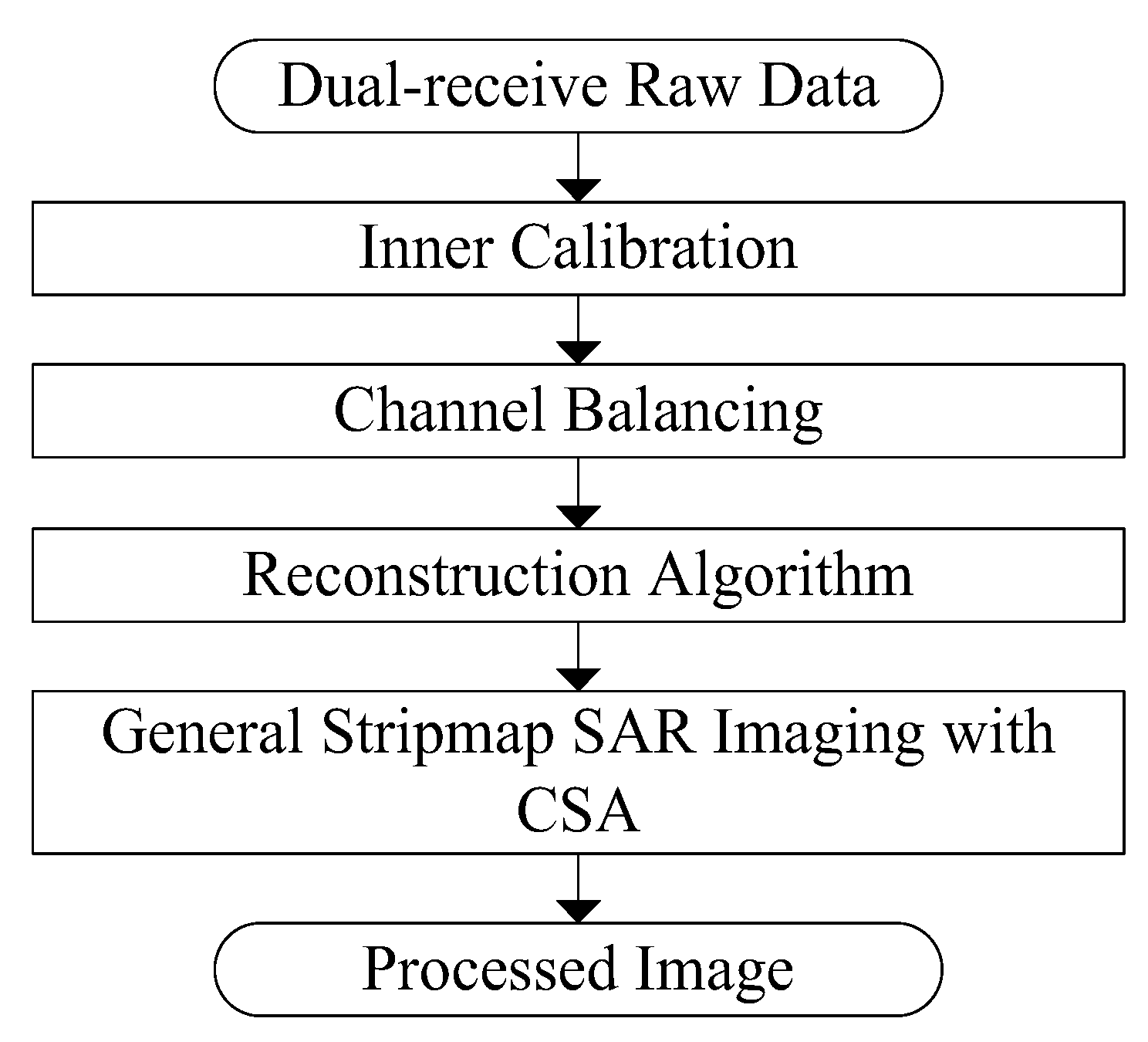
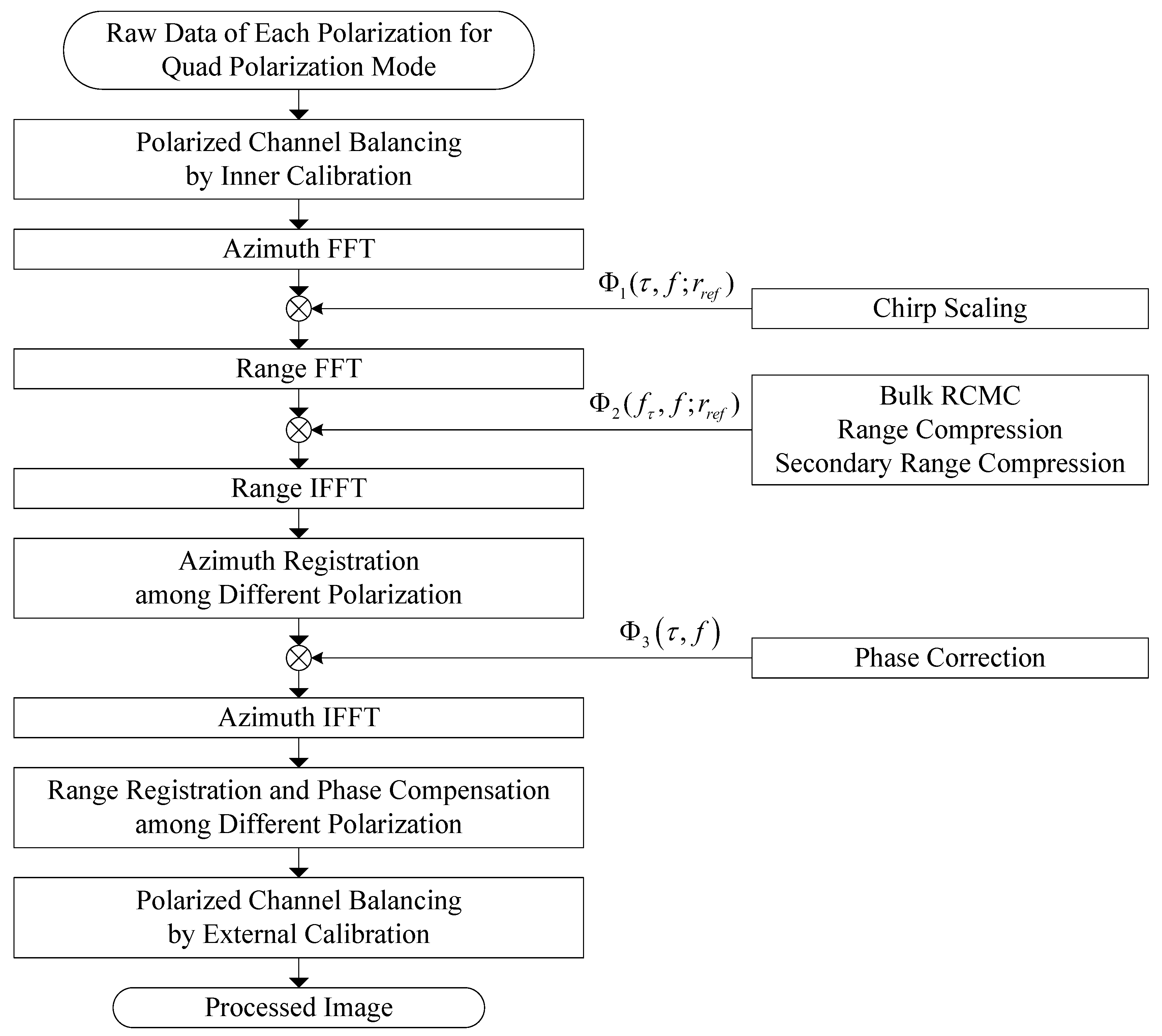

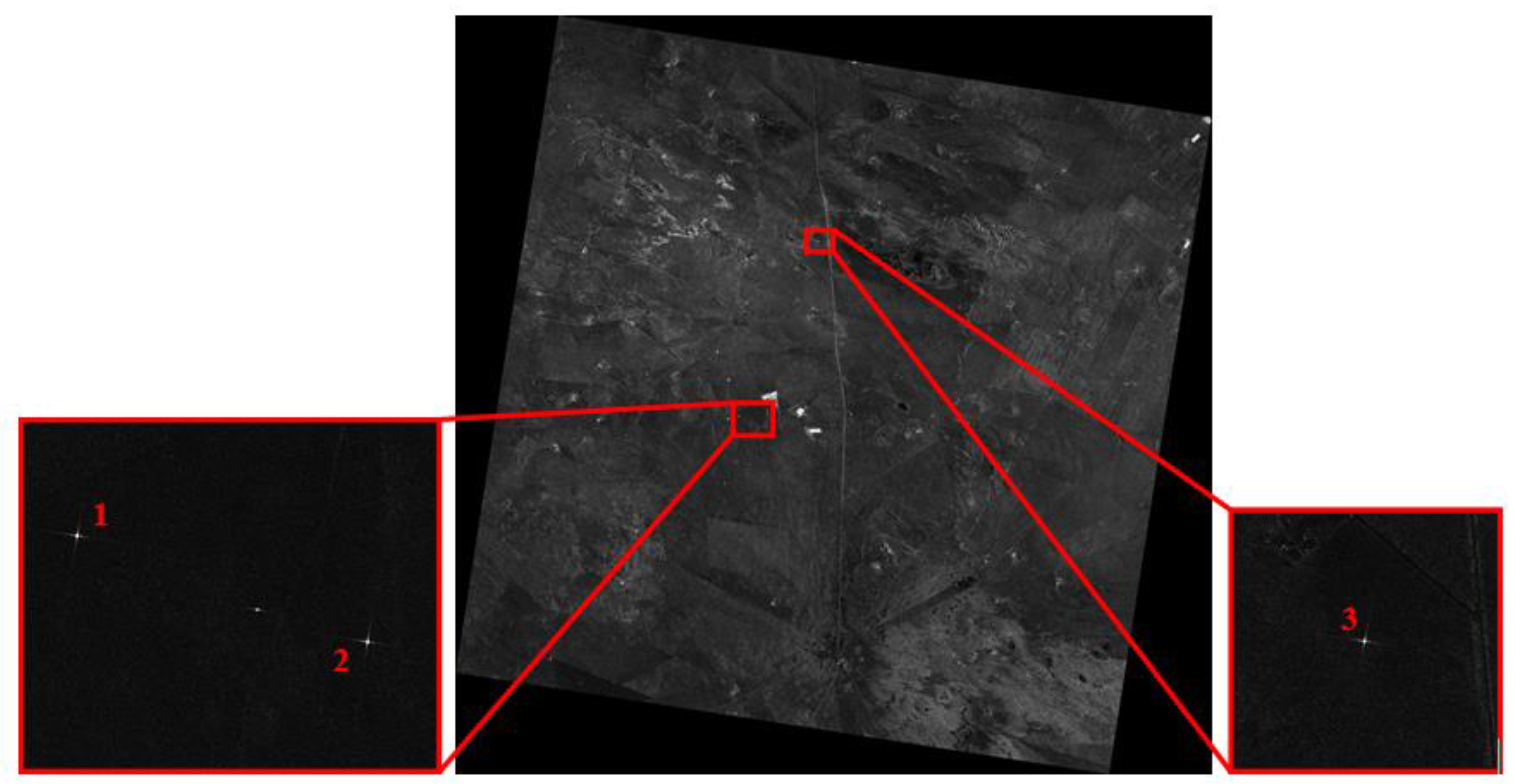
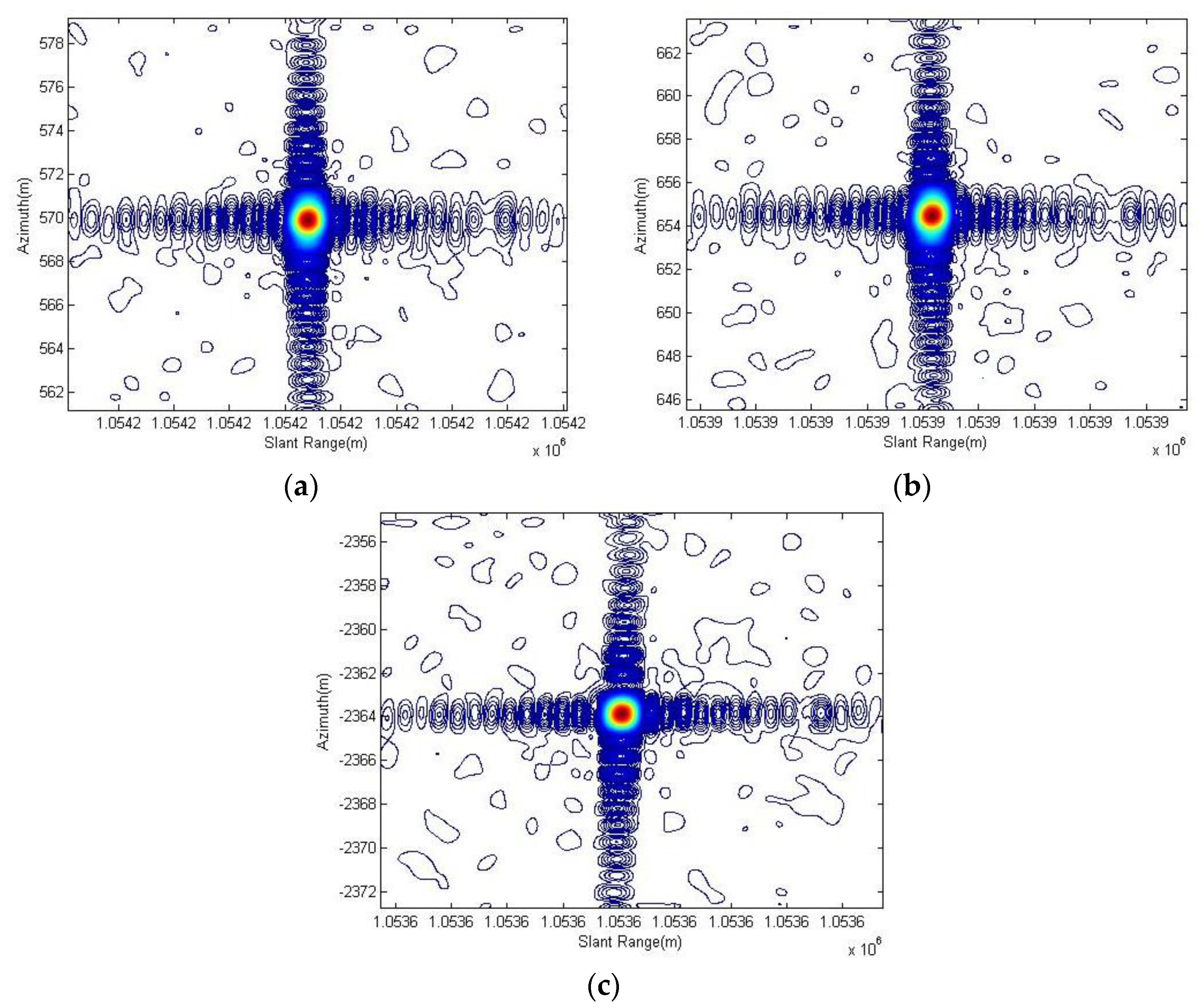
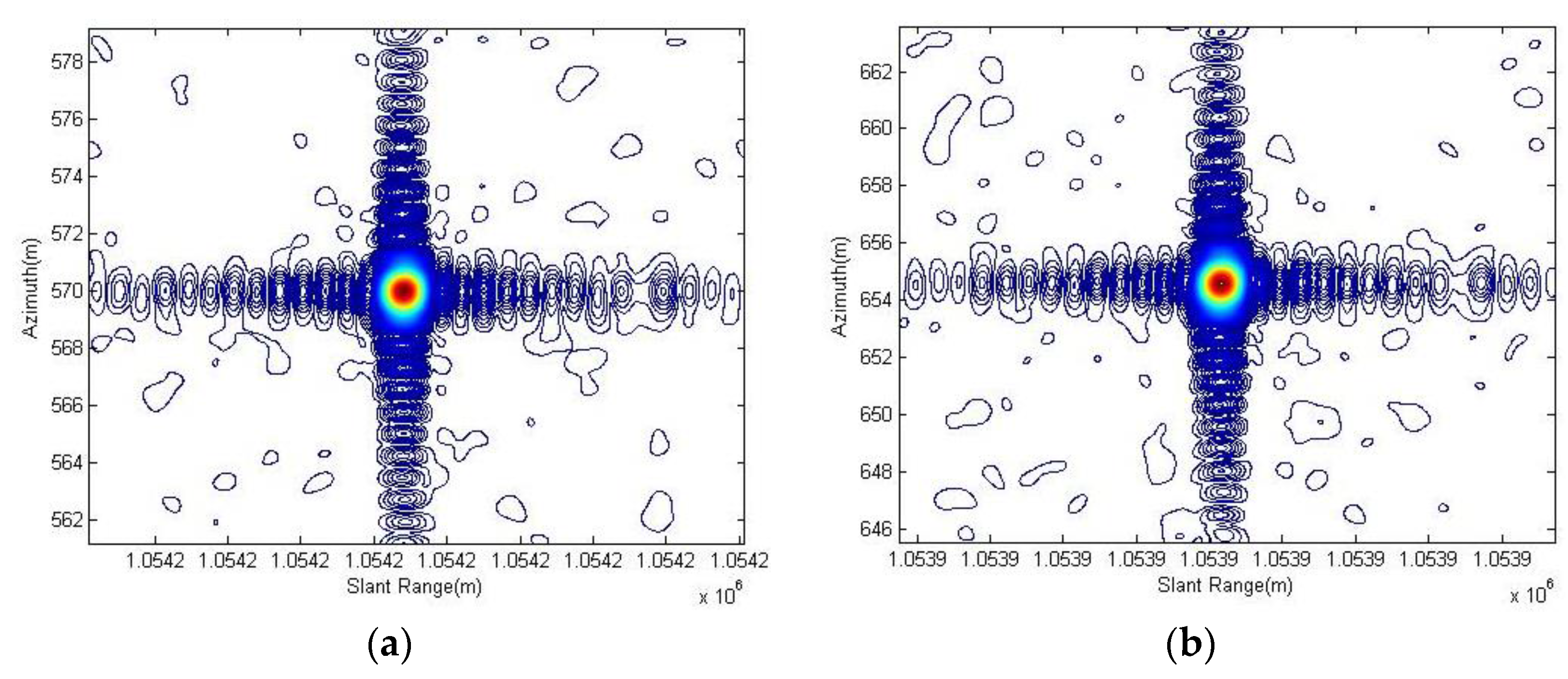


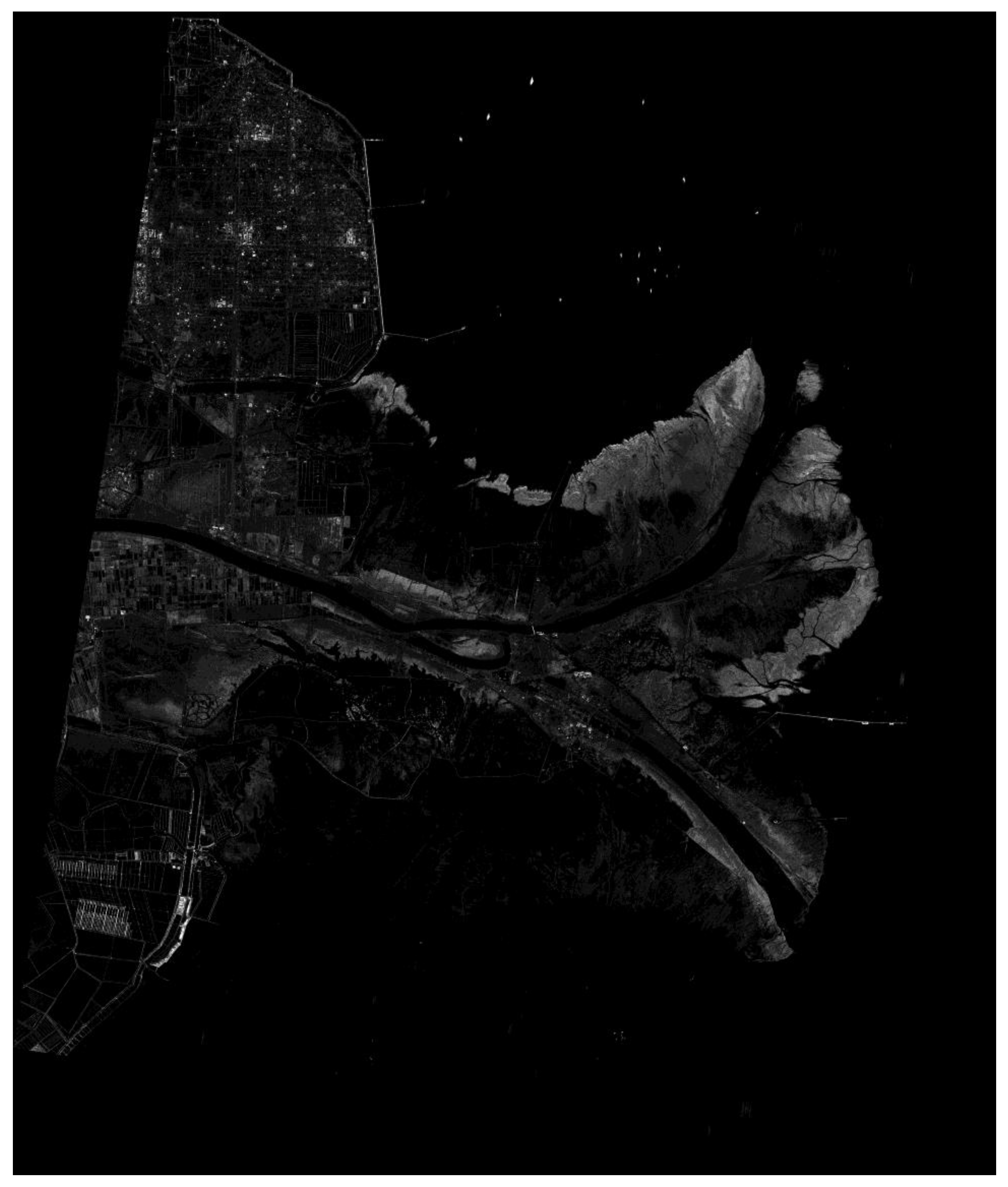


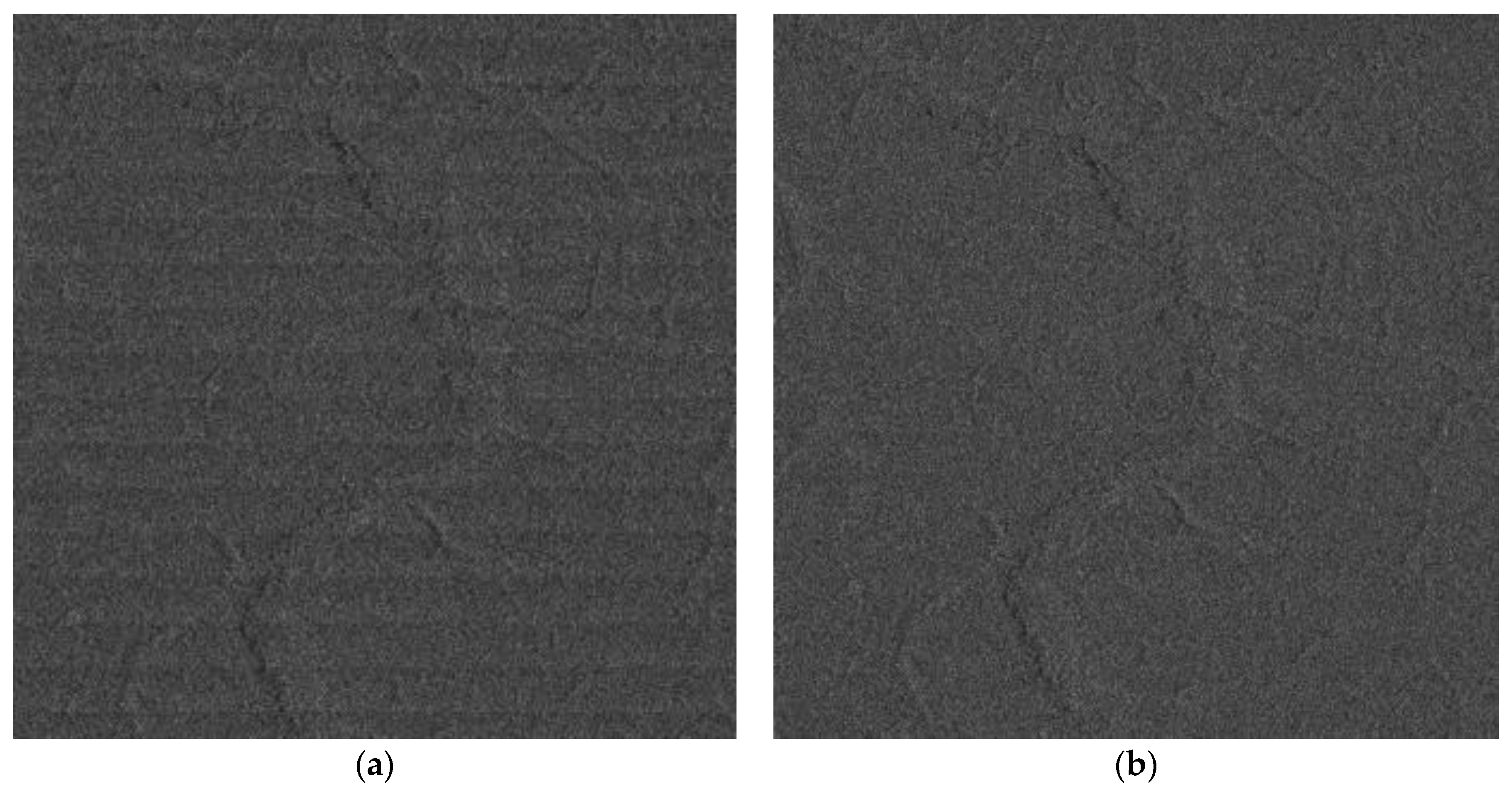
| Level | Type | Format |
|---|---|---|
| Level 1A | Single look complex imagery in slant range geometry (SLC) | TIFF + RPC |
| Level 1B | Single or multiple looks intensity imagery in slant range geometry (S/MLI) | TIFF + RPC |
| Level 2 | Single or multiple looks intensity imagery geocoded (SGC) | GeoTIFF |
| Parameter | Value |
|---|---|
| Observing Mode | Spotlight |
| Polarization | VV |
| Incidence Angle | 47.197573°–47.674581° |
| Resolution | 1.0 m (A) × 1.0 m (GR 1) |
| Swath | 10 km (A) × 10 km (GR) |
| Relative Radiometric Accuracy | 1.0 dB (in one scene) |
| Absolute Geolocation Accuracy 2 | 10 m (Maximum Value) |
| Peak Sidelobe Ratio | −22.0 dB (A) × −22.0 dB (R) |
| Integral Sidelobe Ratio | −15.0 dB (A) × −15.0 dB (R) |
| Resolution (m) | PSLR (dB) | ISLR (dB) | ||
|---|---|---|---|---|
| CR1 | Slant Range | 0.6734 | −23.0007 | −20.0332 |
| Azimuth | 0.9084 | −19.5094 | −18.0584 | |
| CR2 | Slant Range | 0.6762 | −22.346 | −20.3446 |
| Azimuth | 0.9131 | −19.8803 | −18.2674 | |
| CR3 | Slant Range | 0.6707 | −21.9888 | −20.0494 |
| Azimuth | 0.8197 | −21.1818 | −17.6952 | |
| Mean Value | Slant Range | 0.6734 | −22.4452 | −20.1424 |
| Azimuth | 0.8804 | −20.1905 | −18.007 | |
| Resolution (m) | PSLR (dB) | ISLR (dB) | ||
|---|---|---|---|---|
| CR1 | Slant Range | 0.6734 | −23.006 | −20.0523 |
| Azimuth | 0.8735 | −22.3987 | −18.7712 | |
| CR2 | Slant Range | 0.6762 | −22.3719 | −20.3598 |
| Azimuth | 0.8739 | −22.9284 | −19.0292 | |
| CR3 | Slant Range | 0.6707 | −22.1987 | −20.1118 |
| Azimuth | 0.8627 | −22.6787 | −18.9657 | |
| Mean Value | Slant Range | 0.6734 | −22.5255 | −20.1746 |
| Azimuth | 0.8700 | −22.6686 | −18.922 | |
| Center Look Angle | Resolution (m) | PSLR (dB) | ISLR (dB) | ||
|---|---|---|---|---|---|
| 1 | 22.37° | N | 0.8165 | −22.9521 | −18.8756 |
| Left-looking | Y | 0.8219 | −22.9906 | −18.6104 | |
| 2 | 36.52° | N | 0.8189 | −19.7917 | −17.608 |
| Right-looking | Y | 0.8199 | −22.9741 | −18.8724 | |
| 3 | 41.17° | N | 0.8804 | −20.1905 | −18.007 |
| Right-looking | Y | 0.8700 | −22.6686 | −18.922 |
© 2018 by the authors. Licensee MDPI, Basel, Switzerland. This article is an open access article distributed under the terms and conditions of the Creative Commons Attribution (CC BY) license (http://creativecommons.org/licenses/by/4.0/).
Share and Cite
Han, B.; Ding, C.; Zhong, L.; Liu, J.; Qiu, X.; Hu, Y.; Lei, B. The GF-3 SAR Data Processor. Sensors 2018, 18, 835. https://doi.org/10.3390/s18030835
Han B, Ding C, Zhong L, Liu J, Qiu X, Hu Y, Lei B. The GF-3 SAR Data Processor. Sensors. 2018; 18(3):835. https://doi.org/10.3390/s18030835
Chicago/Turabian StyleHan, Bing, Chibiao Ding, Lihua Zhong, Jiayin Liu, Xiaolan Qiu, Yuxin Hu, and Bin Lei. 2018. "The GF-3 SAR Data Processor" Sensors 18, no. 3: 835. https://doi.org/10.3390/s18030835





